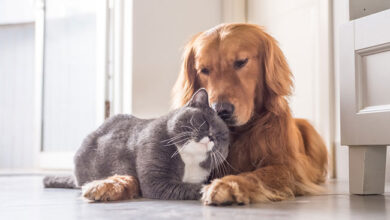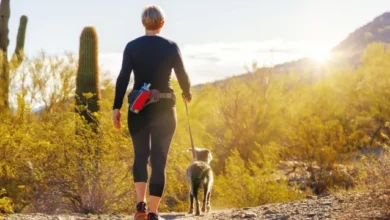
nxiety is something with which we are all more familiar than ever before. Unfortunately, while we can work to mitigate how our life impacts our mental health, some of life’s most circumstances remain entirely outside of our control. The last year or so has, to an unparalleled extent, caused even the most benign aspects of our daily routines to turn on us – to take on a new, threatening demeanor, and to punctuate our days with more worry, unease, and stress than we would have thought possible just eighteen months ago.
Unfortunately, we are not the only ones who are suffering from a daily sense of anxiety. As life returns to normal, for instance, and many of us resume a long list of activities that take place outside the four walls of our homes, fears over the impact this will have on our dogs’ mental health are beginning to spread far and wide.
As such, millions worldwide are beginning to grow more attuned to the signs of distress, worry, and separation anxiety in their dogs than ever before and looking for reliable ways to mitigate the emotional impact the return to work will have on their health. Read more below.
The Signs of Anxiety
Anxious dogs can exhibit any number of behavioral changes due to increased anxiety – a state that is, unfortunately, increasingly common during times of increased separation. These include increasing aggressive behavior, accidents around the house, destruction, excessive panting, pacing, or barking.
Of course, identifying these behaviors is difficult when you are at work, which is why many recommend investing in a nanny cam for your dogs to ensure you are always aware of their emotional state.
Treating Anxiety in Dogs
There are two different approaches dog owners can take toward treating anxiety in dogs, although many dog owners prefer to use a combination of the two. One route focuses on finding therapeutic treatments or medications to help calm frayed nerves and establish a better internal balance, while the other involves making changes to the physical environment, providing stimuli, and altering the daily routine wherever possible.
In the first camp, recent years have seen many people turning to the therapeutic, calming effects offered by CBD products for dogs – an ingredient that has gained considerable traction in medical communities, as well as the health and wellness industry.
Even if you have yet to try it yourself, you have likely already heard about some of the potential benefits offered by CBD – an extract from the hemp plant – including anti-inflammation, pain relief, and support for common causes of mental ill health such as depression, stress and anxiety. The story remains the same for our furry friends, for whom CBD is safe, and easily administered through treats, supplements or capsules.
In the second camp, the internet is awash with plenty of proactive measures dog owners can take to create a more relaxing, reassuring environment and routine for dogs who are unused to being left on their own.
In terms of altering the environment, home diffusers that release specific, calming pheromones into the air have long been a mainstay for busy dog owners. Similarly, a wide range of musical playlists for dogs have been curated and released via Spotify and other similar platforms; these are intended to replace anxiety-inducing noises, such as car- and foot-traffic, with calming sounds to create a more restful environment.
Finally, when it comes to adapting your routine for your dog, it may take some time before you settle on habits that suit both you and your furry companion. If possible, many dog owners recommend returning home from the office for lunch, in order to provide reassurance and variation to a dog who would otherwise remain isolated for upwards of seven hours.
Alternatively, if leaving the office during the day is not possible, then enrolling your dog at a day-care may be the best solution.
The potential for mild to severe anxiety conditions in dogs is something we have been aware of for many years now, but never before have we tasked our dogs with the emotional turmoil of being left alone after so many months of near-constant companionship. Whatever you decide to do to support your dog, ensure that, wherever possible, you are providing an abundance of attention, from pampering them with massages to plenty of time outdoors. These steps alone will go a long way to ensuring that your dog is able to make it through this transitional phase, and retain their sense of inner calm and composure as you return to the old ways of working.



